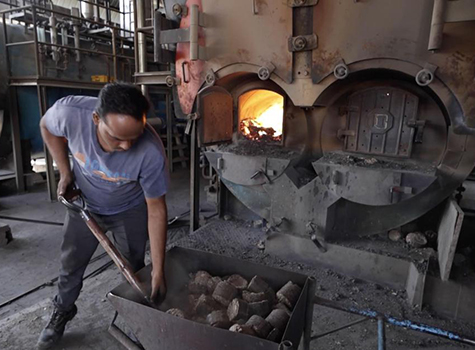By Parul Kharod

Centuries ago, humans ate food that grew around them in its most natural form. Then cooking techniques were invented and we started using food in a slightly altered form from its natural raw versions. Then came industrialization and we started more processing.
A processed food is one that has been altered from its original form. We started eating more packaged foods for convenience. The International Food Information Council defines processing as “any deliberate change in a food that occurs before it is ready for us to eat.†Most foods we eat are technically processed, unless we eat fruits and vegetables that are grown in our home gardens.
But just because something has gone through a process doesn’t mean it’s unhealthy to eat. If you are using mostly “whole†foods that are prepared or made ready to eat, they are still fine to consume them. For example, rolled oats or cracked wheat or any of the split daals.
However, now we have reached a stage where we have what is officially been labeled as “ultra processed foodsâ€. Ultra processed foods are referred to as edible products made from manufactured ingredients that have been extracted from foods, processed, then reassembled to create shelf-stable, tasty, and convenient items.
For example:
• Unprocessed food = whole apple
• Processed = apple slices in a bag
• More processed = apple sauce or apple juice
• Ultra processed = Apple Jacks cereal or apple flavored granola bar or apple flavored gummies
Ultra-processed foods currently make up nearly 60 percent of what the typical adult eats, and nearly 70 percent of what kids eat. The category includes everything from cookies and sodas to jarred sauces, cereals, packaged breads, and frozen foods.
How to identify ultra processed foods? Look at the list of ingredients!
Ultra-processed foods are defined as industrial formulations with five or more ingredients. They tend to include many additives and ingredients that are not typically used in home cooking, such as preservatives, emulsifiers, sweeteners, and artificial colors and flavors. They are made mostly from substances extracted from foods, such as fats, starches, added sugars, and hydrogenated fats. They may also contain fillers and stabilizers. These foods generally have a long shelf life. In short, if you pick up an item, look at the list of ingredients, and it’s a long paragraph or seems like you are reading a chemistry textbook, put it away!
Why are ultra-processed foods bad for physical health?
• They contain higher levels of trans fats, saturated fats, added sugars, or excess sodium.
• The processing makes a difference in how we digest and absorb the nutrients. Ultra processed foods have been shown to affect gut health.
• Research shows links between ultra processed foods and increased risk of weight gain and heart disease. High consumption of ultra-processed foods has been linked to health concerns ranging from increased risk of obesity, hypertension, breast, and colorectal cancer to dying prematurely from all causes.
Ultra processed foods and Mental Health
One of the most fascinating areas of research is food and mental health! Research is showing that these ultra processed foods have chemicals that can be highly addictive. Some studies show that the brain responds to these chemicals in the same way as any drug, alcohol, or opioid addiction! Once you start eating these foods, you become so addicted to them that it is hard to stop.
This is perhaps one of the main reasons to limit giving these packaged foods to young children.
How can you cut back on ultra-processed foods?
• Be mindful when shopping for groceries – learn to read the list of ingredients. The shorter the better! For example, the ingredients label on a jar of peanut butter should be peanuts. That’s it!
• Cook more at home – restaurant foods, and especially fast foods tend to have many extra additives. Search for the ingredients in a typical fast-food meal, and you will know how processed it is.
• Move snacks from the pantry to the refrigerator! Shelf stable packaged snacks tend to be more processed and full of additives. Consider fresh fruits and vegetables as a snack. Add healthy dips to make the snacks more appealing.
• Consider the source – think about where your food comes from. If you have trouble figuring out where a food originated because it has been so highly manipulated, it is an ultra-processed food.
• Beware of marketing gimmicks – Ultra-processed foods are often marketed as “healthy,†“natural†and “organic.†While these words may describe the original ingredients, they don’t refer to the process of how the food was made. Remember, an organic, natural cookie is still an ultra-processed food!
We are what we eat, so be careful of what you put into your body!
Parul Kharod is a registered dietitian and licensed nutritionist and works as a Clinical Dietitian. She can be reached at parulkharod@gmail.com.



